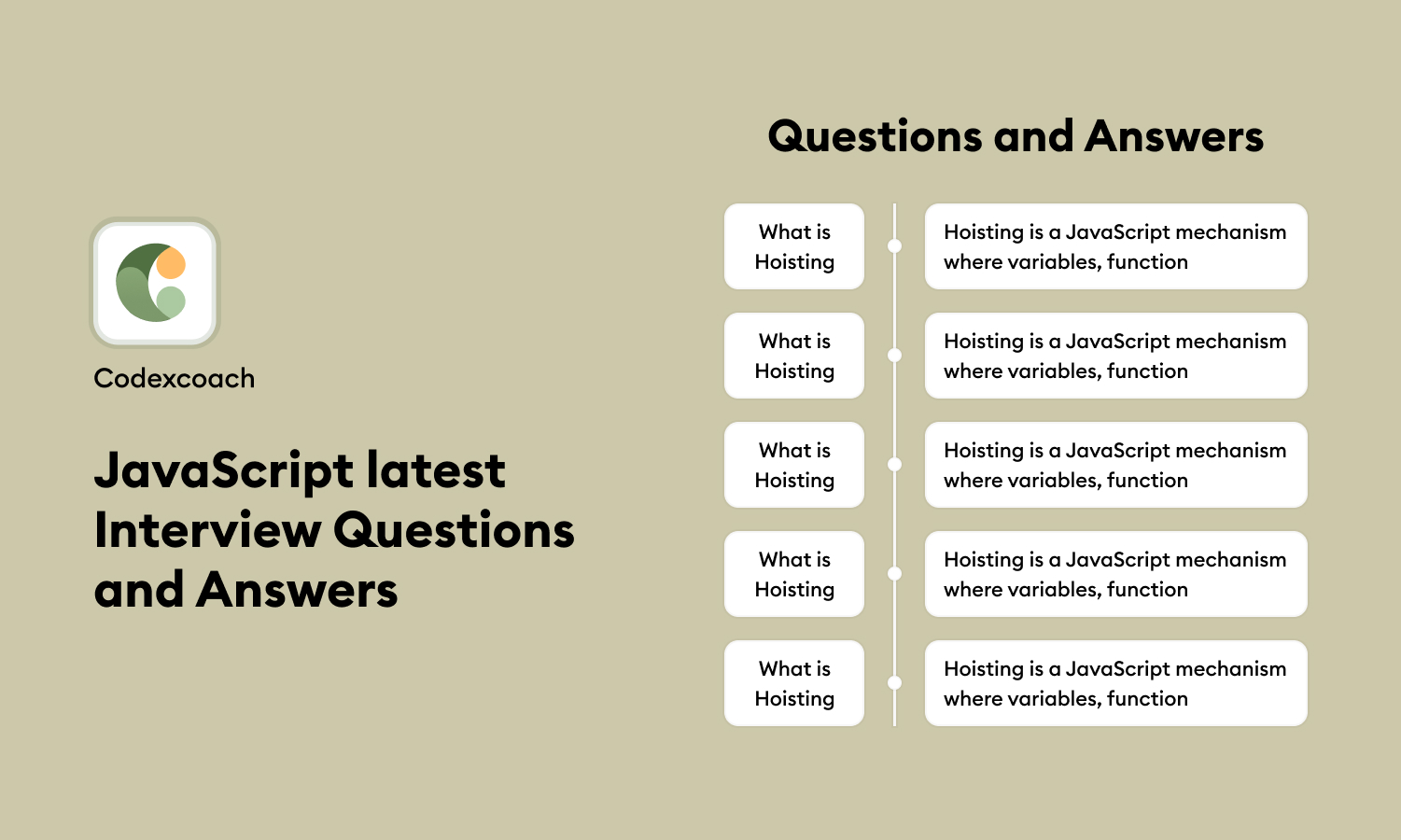1. What is Destructuring in JavaScript?
Destructuring allows you to unpack values from arrays or properties from objects into distinct variables.
const { a, b } = { a: 1, b: 2 };
2. Explain let and const.
let allows you to declare variables with block scope, while const allows you to declare variables whose values should not be reassigned.
3. What is an arrow function?
Arrow functions provide a shorthand syntax for writing functions and do not have their own this value.
const add = (a, b) => a + b;
4. What is a Promise?
Promises represent a value that may be available now, in the future, or never. They are commonly used for asynchronous operations.
5. Explain Async/Await.
async and await make it easier to work with Promises by making asynchronous code look and behave more like synchronous code.
async function fetchData() {
const data = await someAsyncOperation();
}
6. What is a Template Literal?
Template literals provide an easier way to interpolate variables into strings using ${}.
const greeting = `Hello, ${name}!`;
7. What are Default Parameters?
Default parameters allow you to set default values for function parameters.
function greet(name = "Guest") {
return `Hello, ${name}!`;
}
Questions on Best Practices
1. What is hoisting?
Hoisting is the JavaScript interpreter’s action of moving variable and function declarations to the top of their containing scope during compilation.
2. What is the importance of ‘use strict’?
‘use strict’ helps in catching common coding mistakes and “unsafe” actions such as defining global variables.
3. What are Pure Functions?
Pure functions are functions where the output is solely determined by its input and it does not produce any side effects.
4. Why is immutability important?
Immutability makes it simpler to track changes, and reason about code, and enables various performance optimizations.
Questions on Frameworks and Libraries
1.How does React’s Virtual DOM work?
The Virtual DOM is an in-memory representation of the real DOM elements. The rendering engine can quickly make changes to the Virtual DOM and then subsequently update the real DOM in a more efficient manner.
2. What is Angular’s Change Detection?
Angular uses a mechanism to keep track of changes in the component data and reflect them in the DOM.
3. How do you manage the state in Vue?
State in Vue can be managed using its reactivity system, Vuex, or even third-party libraries.
Advanced JavaScript Concepts
1.What is a closure?
A closure is a function that has access to its own scope, the scope of the outer function, and the global scope.
2. What is the Event Loop?
The event loop is what allows JavaScript to perform non-blocking operations by offloading operations to the system kernel whenever possible.
3. Explain Throttling and Debouncing.
Throttling and debouncing are techniques used to limit the number of times a function can execute. Throttling executes the function at a regular interval while debouncing executes the function after a delay.
4. What is the difference between null and undefined?
undefined means a variable has been declared but has not yet been assigned a value. null is an assignment value that represents no value or no object.
5. Explain this keyword.
this refers to the object it belongs to. In a global context, it refers to the global object. In a function, it depends on how the function is called.
6. What is the difference between == and ===?
== compares values for equality after type coercion, whereas === compares both value and type.
7. Explain the Prototype Chain.
JavaScript objects have a link to a prototype object. When trying to access a property that does not exist in an object, JavaScript tries to find this property in the prototype of the object.
8. What is IIFE (Immediately Invoked Function Expression)?
IIFE is a function that runs as soon as it is defined.
(function() {
// logic here
})();
Framework and Library-Specific Questions
1.What is JSX in React?
JSX is a syntax extension for JavaScript that allows you to write HTML elements and components using a HTML-like syntax.
2. What is Redux?
Redux is a predictable state container for JavaScript apps, commonly used with React.
3. What are Directives in Angular?
Directives are markers on DOM elements that tell Angular to apply special behavior to that element or transform it.
4. Explain Vue’s Computed Properties.
Computed properties are reactive functions in Vue that return a value. They are cached based on their dependencies, and only recompute when some dependency changes.
5. What is Webpack?
Webpack is a module bundler. It takes modules with dependencies and generates static assets representing those modules.
Testing and Debugging
1.What is TDD in JavaScript?
Test-driven development (TDD) is a development approach where you write a test before you write enough production code to fulfill that test.
2. What are some JavaScript testing frameworks?
Examples include Jest, Mocha, and Jasmine.
3. What is console.table()?
console.table() displays data as a table in the console.
4. How do you debug JavaScript code?
Debugging can be done using debugging tools in the browser or by using console.log(), debugger, etc.





